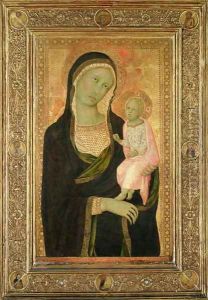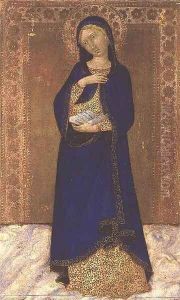Naddo Ceccarelli Paintings
Naddo Ceccarelli was an Italian painter of the Sienese school during the early Renaissance. His exact birth date is not known, but he is believed to have been active from around 1347 until sometime after 1350, which is the last documented reference to the artist. Ceccarelli was a contemporary of other notable Sienese painters such as Simone Martini and the Lorenzetti brothers, Pietro and Ambrogio.
Ceccarelli's works are primarily religious in nature, reflecting the predominant themes of the period, which focused on spirituality and piety. His art is characterized by the use of vivid colors, gold leaf, and intricate details, typical of the Sienese style, which was known for its elegance and decorative quality. One of his most significant contributions to the art world is a series of panels from an altarpiece depicting various saints, now housed in the Pinacoteca Nazionale in Siena. These panels exhibit Ceccarelli's skill in creating graceful figures and his ability to imbue them with a sense of divine presence.
Unfortunately, due to the lack of extensive records, much of Ceccarelli's life and career remains a mystery. The documentation that does exist, including contracts and mentions in contemporaneous writings, suggests that he was a respected member of the Sienese art community. His work is considered an important link in the development of Sienese painting, bridging the gap between the Byzantine-inspired art of the 13th century and the more naturalistic style that emerged in the late 14th and early 15th centuries.
The precise date of Naddo Ceccarelli's death is not recorded, and as a result, his later life and the circumstances surrounding his death are not well-documented. His artistic legacy, however, has been preserved through the paintings that survive him and the influence he had on subsequent generations of Sienese artists.

